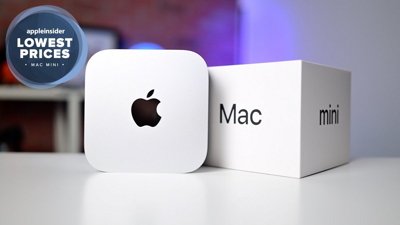Apple on Tuesday was granted a patent for the formation and tracking of location-sharing groups without the need for a cellular network, much like a decentralized version of the technology powering the company's "Find My Friends" iOS app.
Apple's U.S. Patent No. 8,284,748 for the "Ad hoc formation and tracking of location-sharing groups" describes the methods and systems required to allow location tracking without support from a centralized server. By allowing close-proximity tracking and geofencing, a number of friends can travel together after quickly joining an ad-hoc location-sharing group.
The invention is akin to Find My Friends, but instead of using a server for support, a host device connects directly with a plurality of devices.
First launched alongside the iPhone 4S and iOS 5 in 2011, Find My Friends allows iOS device users to follow and track each each other by retrieving GPS or Wi-Fi geo-positioning data, which is then viewed on a built-in map. The system requires a connection with Apple's servers, which feeds appropriate data to all devices in a location-sharing group.
As noted by the patent, conventional location-sharing applications use a cumbersome request, consent and confirmation system run by a centralized server.
Location-sharing group identification markers.The '748 patent removes the server from the equation, and defines a location-sharing group as being the formation of a host device that sends a group initiation request to at least one other mobile device, which receives and gives consent for location tracking. This process can be accomplished by using a number of technologies, including Bluetooth, SMS and VoIP, among others.
The technology relies heavily on geofencing, or the technique of creating a virtual perimeter around a given location or device. When a location is geofenced, a location-aware device can signal its entry or exit of said area, thus allowing for notification that a user is leaving the location-sharing group's coverage area.
From the patent summary:
Departure of a participating device from the location-sharing group can be detected based on the current location and the coverage radius of each device in the location-sharing group. Entry of points of interest into the geofence of the location-sharing group can be detected and notified to the participating devices in the location-sharing group.
The patent provides for a number of tracking options, including constant tracking from a host device, which could be particularly useful if on a guided tour. If a user becomes lost, or wanders outside of the geofenced coverage area, a route back to the group can be sent to their device.
Overall, the tracking methods described are similar to the rules used in Find My Friends, and are based on time or other user-designated metrics.
Location-sharing group tracking on map.Finally, the '748 property can interface with "points of interest" that can be specified by a user or host device.
For example, the group members can specify a general category for the location of interest, such as coffee shops, restaurants, gas stations, art museums, theme park rides, and so on. For another example, the group members can further specify other criteria for selecting particular entities within the category to be a location of interest, such as a rating, a particular brand, a price range, and so on.
Devices can also be deemed "points of interest," or "devices of interest:"
In an example scenario, a secured zone around several key personnel can be established while they work on a highly confidential project. A location-sharing group can be established for these key personnel, so that they can be updated with the locations of other key personnel at all times. If a person that does not belong to the group (e.g., a janitorial staff) is found to be near the group, the location-information server can provide an alert to the key personnel in the group, so that they can take necessary measures to protect their confidential work while the outsider is nearby.
While Apple hasn't announced any plans to implement the patent, the technology for such a system is already present in most iOS and OS X products. The patent was filed for in July 2010, with Hooman Berghei credited as its inventor.
 Mikey Campbell
Mikey Campbell







-m.jpg)






 Malcolm Owen
Malcolm Owen
 Andrew O'Hara
Andrew O'Hara
 Christine McKee
Christine McKee

 Amber Neely
Amber Neely
 Andrew Orr
Andrew Orr
 William Gallagher
William Gallagher









3 Comments
Looks like Find My Friends will be getting an update.
[quote name="Tallest Skil" url="/t/153240/apple-patents-device-to-device-location-sharing-technology#post_2207597"]Looks like Find My Friends will be getting an update. [/quote] Likely. I suspect this is just the beginning for ad hoc services. There might be another system in the works for things like photo sharing, iMessages etc. Actually come to think of it, I think iPhoto beaming is already ad hoc. Such things could be great for keeping together in places like amusement parks. Many,if not most, don't have public wifi so putting juniors iPod touch in his bag to track him if he wanders off ones not work. But if you could ad hoc. Someone might even create some kind of arm band, necklace etc to give kiddie that you can track in such a way without giving them an expensive iPod.
[quote name="charlituna" url="/t/153240/apple-patents-device-to-device-location-sharing-technology#post_2207754"] Likely. I suspect this is just the beginning for ad hoc services. There might be another system in the works for things like photo sharing, iMessages etc. [/quote] And hopefully all without the need to collide my phone with someone else's idevice.